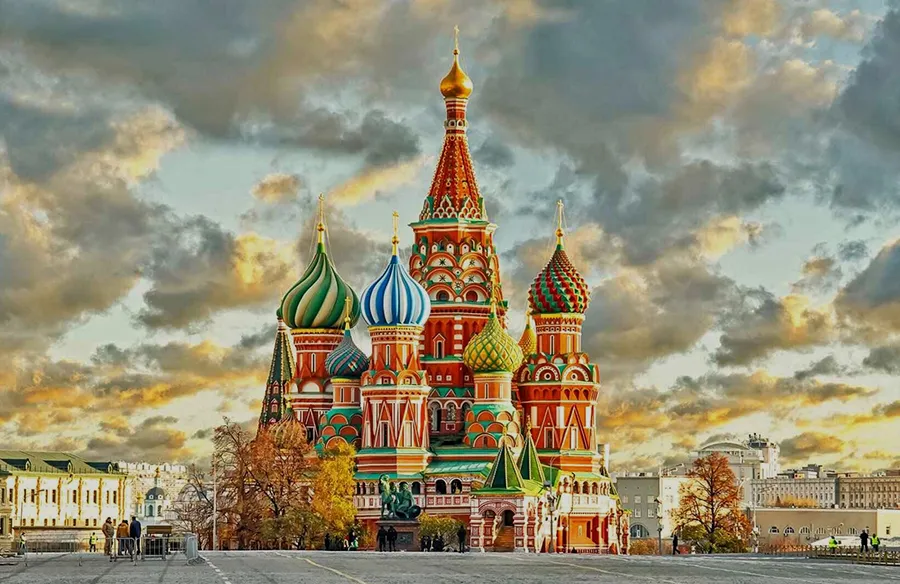khakisofirvington.com – Saint Basil’s Cathedral, with its vibrant and whimsical domes, stands as an architectural wonder in the heart of Moscow, Russia. Officially known as the Cathedral of the Intercession of the Most Holy Theotokos on the Moat, it is more commonly referred to by its popular name, Saint Basil’s Cathedral. This iconic structure, located in Red Square, is a symbol of Russia’s rich cultural and historical heritage, capturing the imagination of visitors with its unique design and colorful facade.
Historical Background
Commissioned by Ivan IV, also known as Ivan the Terrible, Saint Basil’s Cathedral was constructed between 1555 and 1561 to commemorate the capture of Kazan and Astrakhan. The cathedral was built during a period of significant expansion and consolidation of power in Russia, serving as a symbol of the Tsar’s dominance and the unification of the Russian state.
Architectural Design
Saint Basil’s Cathedral is renowned for its distinctive architectural style, which combines elements of Russian, Byzantine, and Asian influences. The cathedral consists of nine separate chapels, each crowned with its own vividly colored and uniquely shaped onion dome. These domes are adorned with intricate patterns and designs, creating a kaleidoscope of colors that stand out against the Moscow skyline. The central chapel, which rises above the others, is topped with a golden dome.
The cathedral’s asymmetrical design and vibrant colors are said to represent the heavenly city of Jerusalem. Its layout, with the chapels arranged around a central core, is reminiscent of a bonfire rising into the sky. This unusual and captivating design distinguishes Saint Basil’s from other religious structures of its time.
Cultural and Historical Significance
Saint Basil’s Cathedral has played a vital role in Russia’s religious and cultural history. Throughout its existence, it has witnessed numerous historical events, including the coronations of tsars and the tumultuous changes of the Russian Revolution. Despite threats of demolition during the Soviet era, the cathedral was preserved as a cultural monument and has since become one of Russia’s most popular tourist attractions.
Conclusion
Saint Basil’s Cathedral remains a powerful symbol of Russia’s architectural innovation and historical legacy. Its vibrant colors and unique design continue to captivate visitors from around the world, serving as a testament to the rich cultural heritage of Russia. As an enduring icon of Moscow, Saint Basil’s Cathedral is a must-see destination for anyone seeking to explore the beauty and history of this fascinating country.
